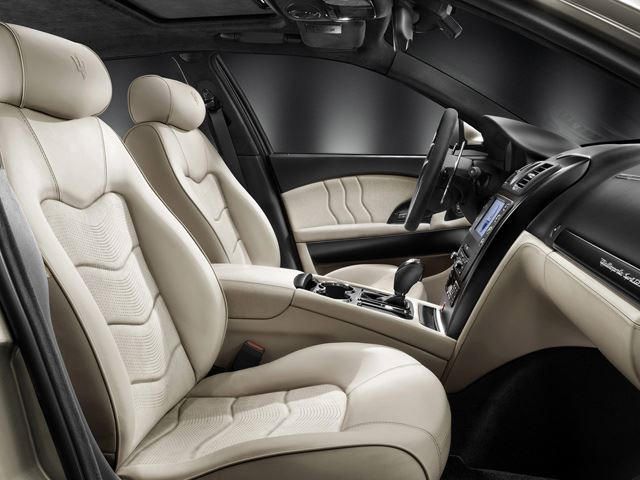
In the inaugural years of the new millennium, Ferrari firmly stamped its authority on Maserati. New factories, new production techniques, new technology and new models had all transformed Maserati into a company that even the least observant outsiders could see was undergoing serious change. However, most of Ferrari's hard work had been done on the back of existing hardware that could trace its roots back to the de Tomaso days (the 3200GT, for instance, was still using an iteration of an engine that dated back to 1989).
That trend, though, would be abruptly brought to a close with the fifth-generation Maserati Quattroporte. When the QP Mk V was revealed in 2003, it became clear that this was the starting point for a new era of Maserati. The running gear, for instance, was all derived from Ferrari's latest technology, with the semi-automatic gearbox and a dry sump 4.2-liter V8 being the clearest indicators (the base architecture of the V8, for instance, would be used a year later to underpin the spellbinding engine in the brilliant F430 supercar). The platform itself was also a departure from Quattroporte norms - whilst still a steel unibody construction, the chassis was developed specifically for the Quattroporte.
As a result, this fifth-gen version of the QP was the first since the original released 40 years earlier to be built on an all-new platform. It was a shame, then, that the Quattroporte V came with quite a few big problems. For example, the sporty suspension setup, gave the Quattroporte an incredibly jittery low-speed ride, at a time when the Jaguar XJR and Mercedes-Benz S-Class AMG models had proven a big, luxurious super sedan didn't have to bounce around on its suspension bushings. The semi-automatic gearbox was also met with plenty of criticism, with the main issue being that the gear changes themselves weren't particularly smooth.
And remember, these negative points were highlighted in an age where the swift-shifting dual clutch boxes we take for granted nowadays were still some way from being widespread in the industry. Despite these quandaries, though, the Maserati Quattroporte V proved to be immensely popular – by 2008, over 17,000 examples had been made. When production stopped in 2012 that had increased to over 25,000 – in other words, for every six QPs sold since the model was introduced in 1963, five of them were fifth-generation models. A reason that could explain the Quattroporte's enduring popularity could be that, throughout its nine-year lifecycle, the car was constantly being tweaked and updated.
For instance, a proper automatic gearbox was added to the range in 2007 (and would eventually replace the semi-automatic the following year), alongside a new GTS trim that placed a much sportier emphasis on an already athletic car. Things really changed in 2008, though, when the Quattroporte was given a makeover akin to the 'Series II' facelift on the original QP. Along with the obligatory styling changes (with the more noticeable of these being the tweaked headlights and more accentuated sills and bumpers), the Quattroporte also received a new engine option: a 4.7-liter V8 with 420 hp.
A year later, that same V8 would find itself tweaked and fettled in 2009 for the new flagship in the Quattroporte range: the range-topping, 440-hp GTS model that placed the Quattroporte right alongside new rivals like the Porsche Panamera and Aston Martin Rapide. By this time, though, the Quattroporte was starting to show its age, to the point where the model was discontinued in 2012. However, work on the sixth-generation model was already well on the way, so those anticipating the new car wouldn't have to be as patient this time around.





